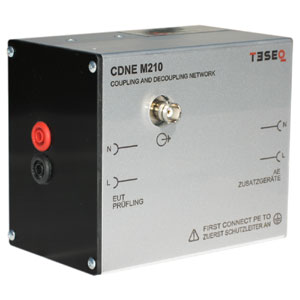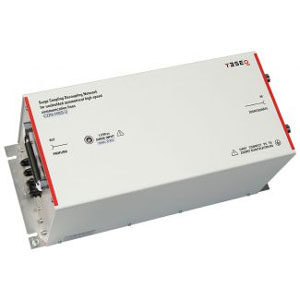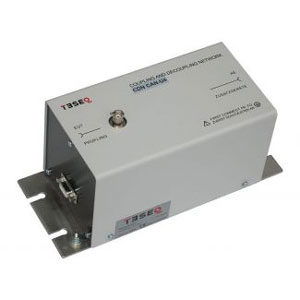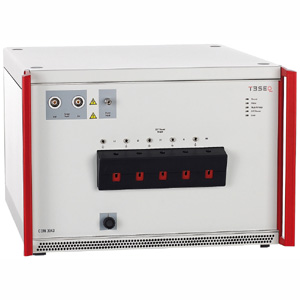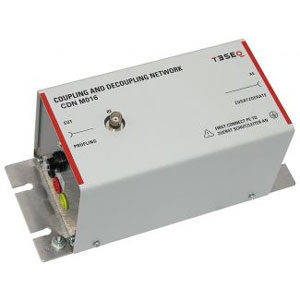- Frequency range 30 to 300 MHz
- 520 V, 10 Amps, M2 version
- Conforms with CISPR 16-1-2
- Enables testing to CISPR 16-2-1 and CISPR 15 CDN method
- Excellent performance
- Calibration kit available
Teseq CDNE M210 Coupling / Decoupling Network for Emission Measurement
Coupling / Decoupling Network for Emission Measurement
CISPR 16-2-1’s most recent edition 3.0 specifies a new test method which allows the use of a coupling/decoupling network for emission measurement (CDNE) to measure disturbance voltages in the 30 to 300 MHz frequency range. This method enables EUTs to be connected directly to the CDNE, allowing a single conducted emission measurement to replace a lengthy radiated emission test. Product standards may use this fast, convenient and economical alternative.
CISPR 15 offers an independent method for measurement of radio disturbance characteristics of electrical lighting equipment. This method specifies the use of a coupling/decoupling network (CDN) as defined in IEC 61000-4-6 with an extended frequency range 30 to 300 MHz. Using a CDNE as described in CISPR 16-1-2 instead of CDN offers improved measurement reproducibility due to standard’s requirements for more restrictive limits of asymmetrical impedance, phase angle, symmetrical impedance and internal attenuation.
The Teseq CDNEs are compliant with the actual versions of CSIPR 16-1-2, CISPR 16-2-1 and CISPR 15’s CDN method.

